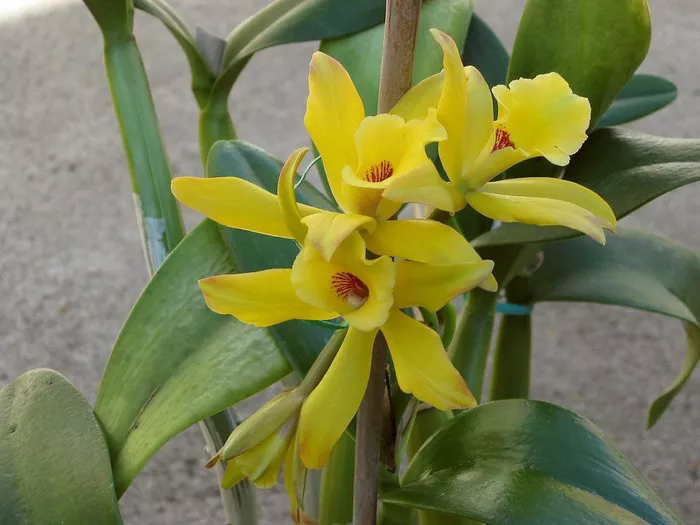Vanilla, with its delicate aroma and distinctive flavor, is one of the most beloved and widely used spices in the world. It adds depth and richness to a variety of culinary delights, from ice cream and pastries to savory dishes. However, what many people may not realize is that vanilla beans, the source of this beloved flavor, come from the fruit of the vanilla orchid, Vanilla planifolia. Unlike many other plants, vanilla orchids require specific conditions for pollination to occur, making the process somewhat elusive. In this guide, we will delve into the fascinating world of vanilla pollination, uncovering the secrets behind this essential step in vanilla cultivation.
Understanding Vanilla Orchids
Before diving into the intricacies of vanilla pollination, it’s essential to understand the anatomy and lifecycle of the vanilla orchid. Vanilla orchids are tropical epiphytic climbers native to Mexico and Central America, though they are now cultivated in various tropical regions around the world. These orchids feature long, slender stems that can grow up to 30 meters in length when supported by trees or other structures. The leaves are leathery and dark green, while the flowers are delicate and pale yellow to cream in color.
The Vanilla Flower: Structure and Characteristics
At the heart of vanilla pollination lies the intricate structure of the vanilla flower. Each flower consists of three sepals and three petals, with one petal modified into a specialized structure known as the labellum or lip. The lip is the most crucial part of the flower concerning pollination, as it acts as a landing platform for pollinators and houses the reproductive organs.
The Challenge of Vanilla Pollination
Unlike many other flowering plants that rely on wind or insects for pollination, vanilla orchids have evolved a unique strategy known as melittophily, or bee pollination. However, vanilla orchids have co-evolved with a specific pollinator, the Melipona bee, which is native to Mexico and Central America. This dependency on a particular bee species presents a significant challenge for vanilla cultivation outside its native range, where these bees may not be present.
Manual Pollination: A Necessity for Vanilla Cultivation
Given the challenges associated with natural pollination, manual pollination is a necessity for vanilla cultivation in many regions. Manual pollination involves transferring pollen from the anther (male reproductive organ) to the stigma (female reproductive organ) of the same or different flower. While this process may seem straightforward, it requires careful timing and technique to achieve successful fertilization and fruit development.
Tools and Materials for Manual Pollination
Before attempting manual pollination, gather the necessary tools and materials:
- Fine-tipped paintbrush or tweezers
- Bamboo sticks or toothpicks
- Pollen collection container
- Gloves (optional)
Steps for Manual Pollination
Follow these steps to successfully pollinate vanilla flowers:
Identify Flowers Ready for Pollination: Vanilla flowers are only receptive to pollination for a brief period, typically in the morning hours. Look for flowers that have just opened and have a slightly drooping appearance, indicating readiness for pollination.
Collect Pollen: Gently collect pollen from mature anthers using a fine-tipped paintbrush or tweezers. Be careful not to damage the delicate reproductive organs.
Prepare Flowers for Pollination: Hold the flower steady with one hand and carefully remove the flap covering the stigma with the other hand. This exposes the receptive surface for pollen deposition.
Transfer Pollen to Stigma: Using the paintbrush or tweezers, transfer the collected pollen to the stigma of the same flower or another flower. Ensure thorough coverage of the stigma surface with pollen grains.
Secure Pollinated Flowers: After pollination, mark the pollinated flowers with a tag or label to track their progress. This step is crucial for identifying successfully pollinated flowers and monitoring fruit development.
Repeat as Needed: Continue the manual pollination process daily until all suitable flowers have been pollinated. Be diligent in checking for newly opened flowers each day to maximize pollination success.
Best Practices for Vanilla Pollination
To increase the likelihood of successful pollination and maximize fruit yield, consider the following best practices:
Timing is Key: Pollinate vanilla flowers early in the morning when they are most receptive to pollen. Avoid pollinating flowers in the afternoon or evening, as they may have already closed.
Maintain Optimal Growing Conditions: Provide vanilla orchids with the necessary environmental conditions, including warmth, humidity, and filtered sunlight. Healthy, robust plants are more likely to produce abundant flowers for pollination.
Promote Pollinator Presence: If cultivating vanilla orchids outdoors, encourage the presence of native pollinators by planting bee-friendly flowers and providing habitat features such as nesting sites and water sources.
Practice Patience: Vanilla orchids have a slow growth and maturation process, with vanilla beans typically taking several months to develop after successful pollination. Be patient and allow sufficient time for fruit development and ripening.
Conclusion
Mastering the art of vanilla pollination is essential for anyone interested in cultivating this prized orchid for its flavorful beans. By understanding the unique anatomy of vanilla flowers and employing manual pollination techniques, growers can overcome the challenges associated with natural pollination and achieve bountiful harvests of vanilla beans. With patience, care, and a little bit of finesse, unlocking the secret of vanilla pollination becomes an attainable goal, ensuring a steady supply of this cherished spice for culinary delights around the world.


